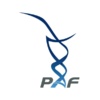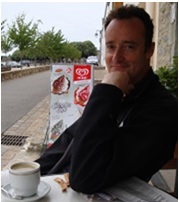总结报告 – May 2024
肯·麦克林, 博士, 科罗拉多大学丹佛分校
“化学伴侣治疗以恢复丙酰辅酶A羧化酶折叠突变中的酶活性: 丙酸血症的个性化治疗策略 (PA)”
丙酸血症 (PA) (MIM 606054), is a serious life-threatening disease that typically occurs in the early period of birth. Individuals with PA exhibit protein intolerance, 呕吐, failure to thrive, 昏睡, and profound metabolic acidosis
症状. This disease can result in mental retardation and without treatment, death can occur quickly, due to, infection, heart problems, or brain damage. There is a pressing need for improved treatments for PA.
PA is caused by mutation in an enzyme called propionyl-CoA carboxylase (PCC) This enzyme consists of two non-identical subunits, α and β, encoded by two different nuclear genes, called PCCA and PCCB.
We observed that a number, but not all, of patient mutations in the PCCB gene generate minimal PCC detectable activity due to the effect of that mutation on the ability of that protein to assemble and fold itself correctly. If the protein does not get to its correct shape, it cannot work properly and thus causes PA. We proposed to use a number of strategies to see if we could restore PCC activity by helping that protein to overcome its mutation and fold correctly. The idea was that if we restore the proteins shape, it will get its function back and the PCC activity can be restored. To do this, we treated bacterial cells expressing the mutant PCC proteins with a range of different chemicals called “Chaperones”. These chemicals have the ability to help some mutant proteins fold into the correct shape and thus make a “broken” protein work again.
In this project we screened 32 different candidate chemical chaperones at a range of concentrations and were able to identify 4 candidates that were capable of at least partially rescuing PCC enzyme activity in our bacteria different PCCB folding mutant proteins.
Two of these chemicals were able to fix the mutant proteins to the point that their activity was essentially normal. in our bacterial system. We then tested these chemicals in PA patient derived skin cells grown in our lab, that carry the R165W mutation in PCC. Without treatment, these cells do not show any PCC activity. Both of these chemicals were able to significantly rescue the function of the R165W PCC mutant protein to the point that it had between 50 to 60% of the activity seen in normal skin cells. If we were able to restore this level of PCC activity in patients, 大多数 PA 临床问题很可能会得到预防. Subsequent work in our lab found that this effect can also be achieved by inducing natural chaperone proteins in the skin cells and that the accumulation of badly folded PCC protein hurts the cell and is likely to be contributing to some of the clinical problems in PCC.
集体, 我们的工作开辟了一种研究某些特定形式的 PA 的新方法,并为这种被忽视的疾病提供了一种新的可能治疗方案. This work would not have been possible without the support of the Propionic Acidemia Foundation, and we sincerely thank everyone who has contributed to this fund.

